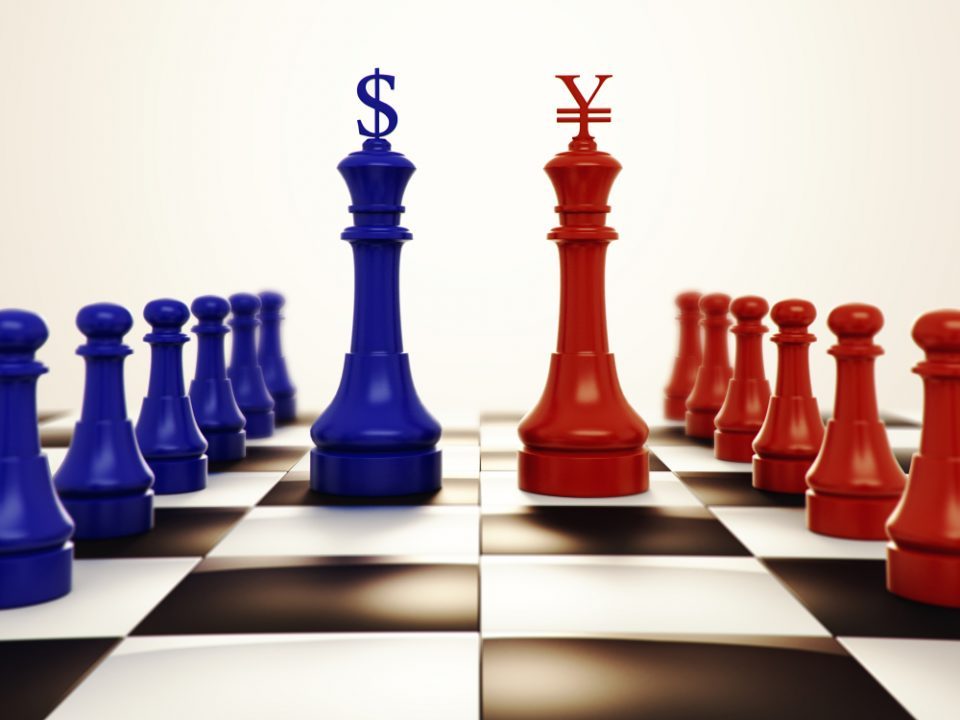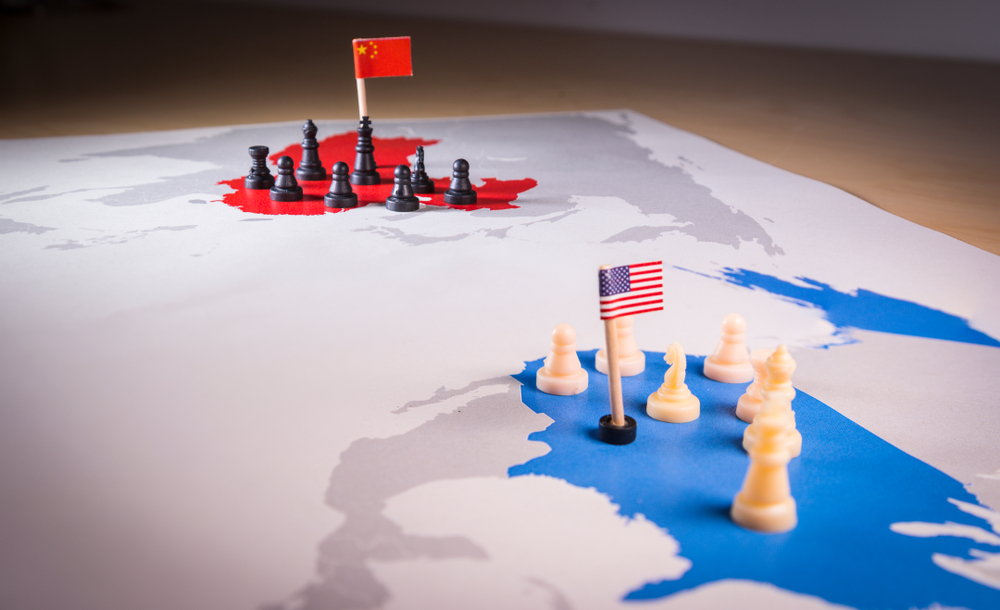Why is China Devaluing its Currency?

A record weakening of the yuan marked the end of the working week as The People’s Bank of China devalued China’s currency to an annual minimum. The central bank is attempting to stimulate Chinese exports following the escalating trade war with the United States.
But, while a cheap national currency will allow Chinese goods to remain in the US market, even after the introduction of new security measures; it will, according to experts, negatively affect the citizens of China. So, what other methods can Beijing use to survive its confrontation with Washington?
[divider height=”10″ style=”default” line=”default” themecolor=”1″]
no-repeat;center top;;
auto
Title
China’s falling yuan
center
no-repeat;center top;;
auto
0px
On Friday, 20 July, the People’s Bank of China (PBC) once again devalued its national currency in record-breaking fashion. For the first time since July 2017, the regulator set the average exchange rate at 6.7671 yuan to the dollar.
The previous day, the corresponding value was at the level of 6.7066 yuan per dollar. So, in one day, the currency of China fell by 605 basis points, making it the largest depreciation since August 2015.
The devaluation of the yuan took place as a reaction to the aggravation of trade relations between the US and China. In connection with the emergence of new restrictions on the access of Chinese products to the US market, the Central Bank of China depreciated the currency in order to increase the volume of national exports.
no-repeat;center top;;
auto
Title
What are the consequences of China’s currency devaluation?
center
no-repeat;center top;;
auto
0px
Due to the low cost of the national currency, goods produced in China are cheaper for foreign buyers. For example, if the yuan fell by 5% against the dollar, a laptop made in China would be 5% cheaper to purchase. Moreover, if China devalues its currency to match US tariffs, then American business partners will not have to overpay for Chinese goods.
In other words, by cheapening the yuan, Beijing seeks to circumvent the trade restrictions imposed by Donald Trump and keep exporting its goods to the United States. Against this backdrop, the ambitions of Donald Trump to free the domestic market from Chinese competitors and thereby stimulate the national business, will be unsuccessful.
no-repeat;center top;;
auto
Title
Defeating China’s “Currency Devaluation game”
center
no-repeat;center top;;
auto
0px
How it all happened
For many years, Donald Trump criticised China for keeping its currency artificially low and “playing a Currency Devaluation game”. Now, with the weight of the American government behind him, Donald Trump is using his power to put pressure on China. In an interview with CNBC, the head of the White House spoke about his readiness to introduce additional customs duties on imports of Chinese goods worth a staggering $500 billion.
.
no-repeat;center top;;
auto

300
225
center
How it all happened
Trump has repeatedly spoken about the necessity of tariff restrictions to prevent the further unfair transfer of American technologies and intellectual property to China, and also for the protection of American jobs.
no-repeat;center top;;
auto
Title
How did we get here?
center
no-repeat;center top;;
auto
0px
How it all happened
The United States first raised customs duties on imports of Chinese solar batteries (up to 30%) and washing machines (up to 20% for the first 1.2 million units and up to 50% for all subsequent ones) on 23 January 2018.
In March 2018, the White House announced the completion of an investigation into the “peculiarities” of Chinese trade. As a result, Donald Trump accused China of regularly stealing intellectual property. According to the presidential administration, it was as a result of these actions that the trade balance deficit with China reached $375 billion.
As a response, China raised tariffs (between 15% to 25%) for the import of 128 US food products with a total value of $3 billion. In particular, the list included pork, fruit, air transport, television and medical equipment.
By May, there had been an increase in the battle between the two largest economies of the world and Washington announced an increase in import tariffs of steel (up to 25%) and aluminium (up to 10%). Later that month, as a result of bilateral negotiations, the states agreed on a peaceful settlement of trade conflict without imposing customs duties. Nevertheless, the US subsequently decided to further escalate the conflict..
So, on June 15, Donald Trump announced his intention to introduce 25% customs duties on Chinese products. The People’s Bank of China responded to the words of the American president immediately and until the end of the month, almost continuously, the domestic currency was devalued. As follows from the regulator’s data, from June 15 to June 29, the Chinese currency fell in price to the American currency at 1860 basis points – from 6.4306 to 6.6166 yuan to the dollar.
As early as July 6, the United States began to impose duties of 25% on Chinese goods worth a total of $50 billion. Part of these tariff measures amounting to $34 billion came into force immediately, and Washington intends to announce restrictions on another $16 billion later. The Chinese authorities, in turn, followed suit with its response.
As the restrictions on the part of the US were already known in advance, against the backdrop of the announcement of new tariff measures, the Chinese regulator for several days kept the domestic currency at a relatively stable level = in the range of 6.62-6.63 yuan to the dollar.
However, already on July 11, US Trade Representative Robert Lightheiser announced the preparation of a new list of imported products from China worth $200 billion that would see a fee of 10% imposed on them. For the authorities of China, the message was a complete surprise, and as early as July 12, China once again embarked on a continuous devaluation of the yuan.
no-repeat;center top;;
auto
Title
In Search For An Alternative
center
no-repeat;center top;;
auto
0px
How it all happened
Since the US market is gradually closing for a number of Chinese products, authorities are beginning to look for new partners to sell their goods to.
China and the United States have long managed to establish trade routes – cheap logistics and a system of mutual crediting were worked out. Now, with the beginning of the trade war, the established structure has ceased to function, and Beijing seeks to stimulate the economy to reorient the export routes.
At the same time, the depreciation of the national currency also has a number of negative consequences for China. So, in connection with cheaper yuan, the Chinese themselves can afford fewer goods and services.
Against this background, the authorities are looking for alternative ways to counter the US trade restrictions. Since July 1, the leadership of China has introduced a number of relevant measures. One of the most important was the abolition of tariffs for the import of goods from other states.
First of all, we are talking about a reduction in tariffs for the import of products from the countries of Southeast Asia and India. This applies to food products – meat and vegetables, as well as the supply of a variety of medical equipment. So Beijing compensates for lowered imports from the US, which Chinese authorities have and will continue to impose customs duties on.
no-repeat;center top;;
auto

medium
center
How it all happened
First of all, we are talking about a reduction in tariffs for the import of products from the countries of Southeast Asia and India. This applies to food products – meat and vegetables, as well as the supply of a variety of medical equipment. So Beijing compensates for lowered imports from the US, which Chinese authorities have and will continue to impose customs duties on.
As pointed out, one of the main blows to the US economy in response to Trump’s protectionist policy, could be the sale of the US national debt by China. To date, Beijing is the largest holder of government bonds of Washington. According to the Ministry of Finance of the United States, the Celestial Empire holds $1.183 trillion of the total debt of $21.214 trillion.
However if Chinese authorities begin to actively sell American securities, this will provoke panic among investors and lead to destabilisation of the global financial markets.
In any case, there is no such action that China can take in order to minimise losses from the trade war, since its economy is strongly tied to that of the US. The trade deficit alone between the US and China is $337 billion in 2017, and the trade turnover has almost reached $600 billion. Thus, the trade war will cause maximum damage to all its participants.
Until the trade conflict ends, the most viable action for the heads of the US and China is to sit down again at the negotiation table and find a compromise. This is the only way that both nations can hope to reduce the damage from the trade war.
[divider height=”10″ style=”default” line=”default” themecolor=”1″]
no-repeat;center top;;
auto
5
date
DESC
